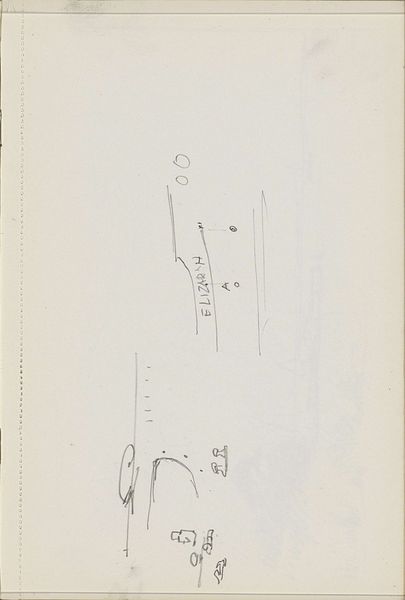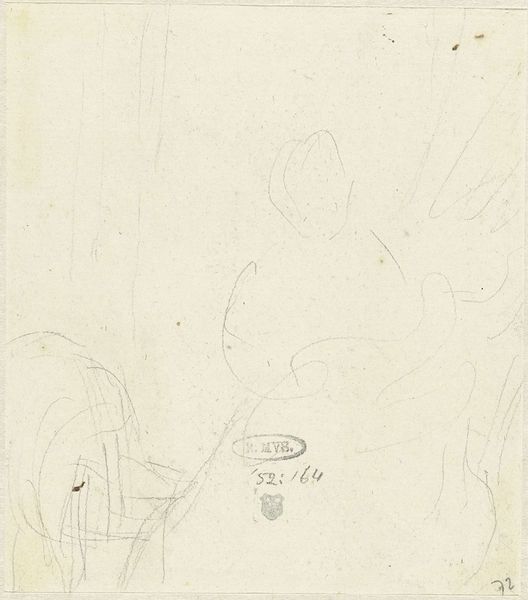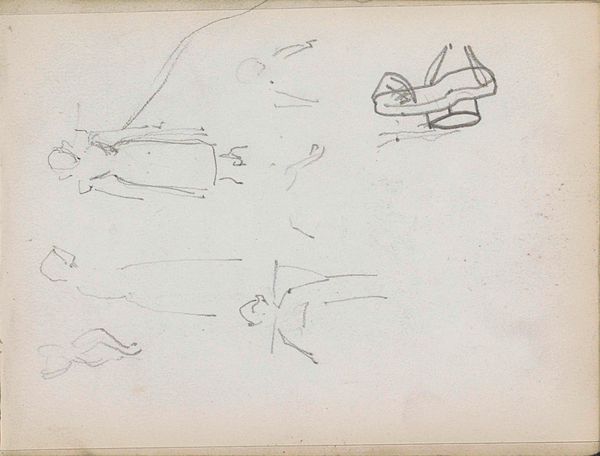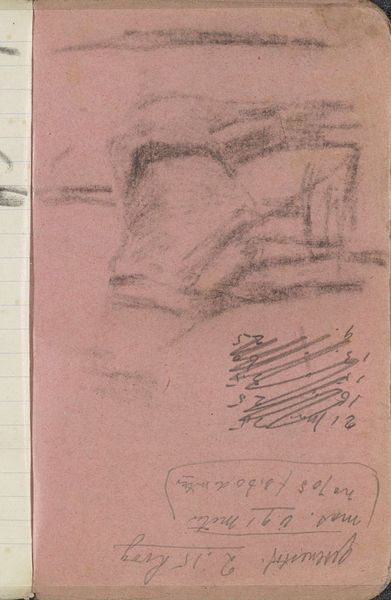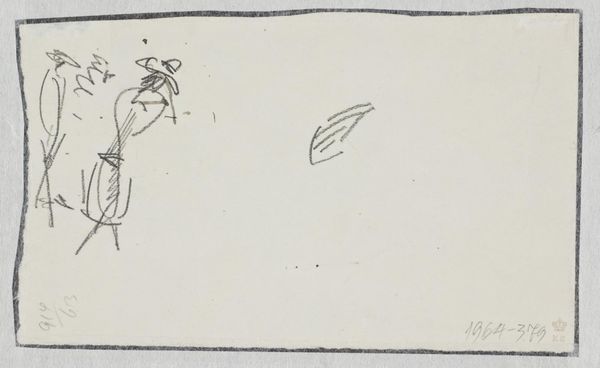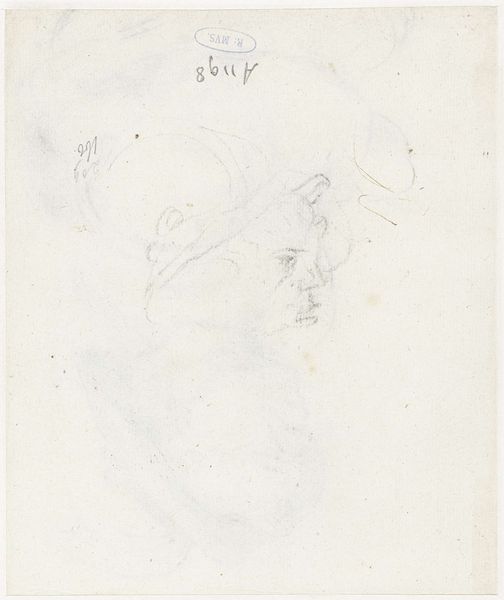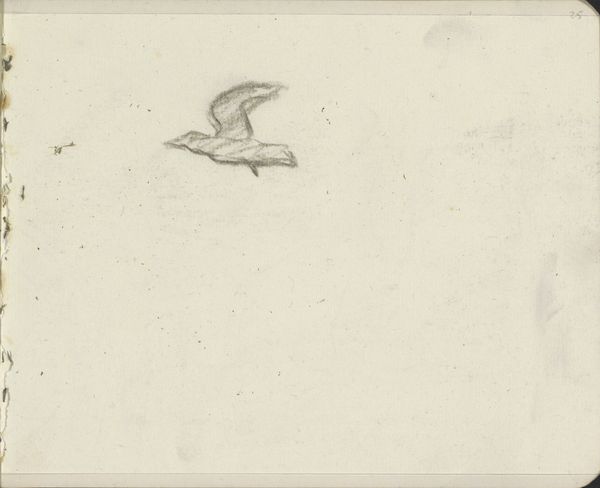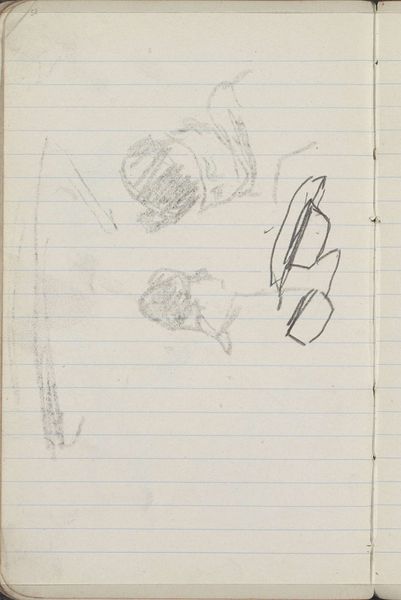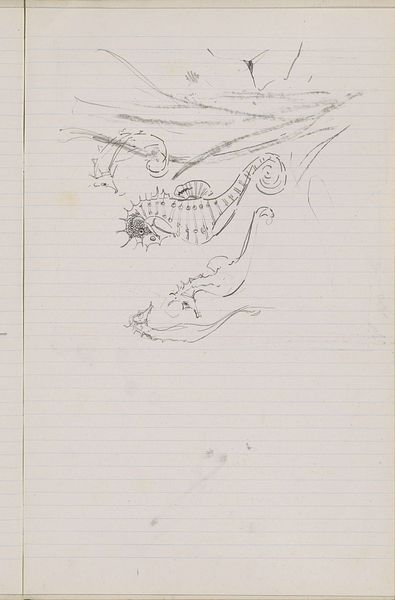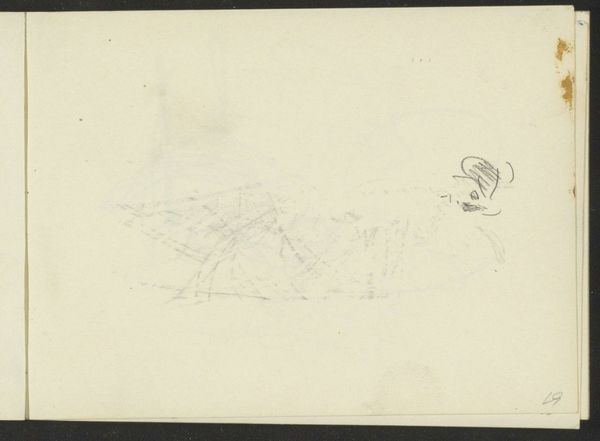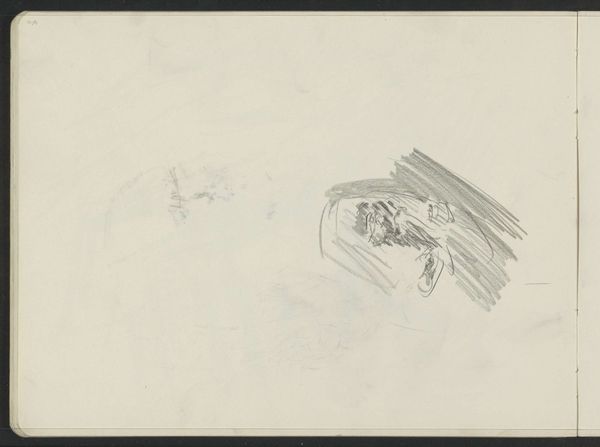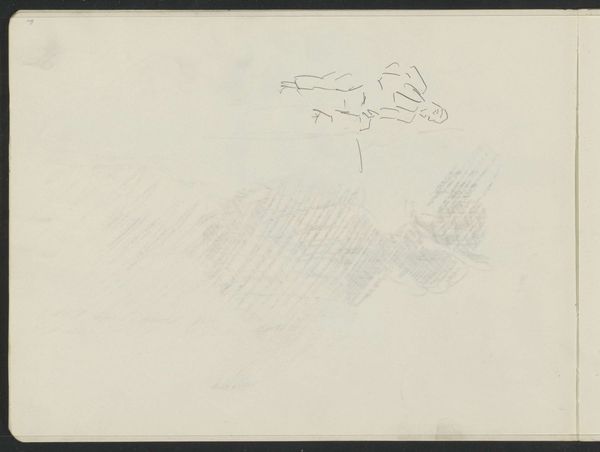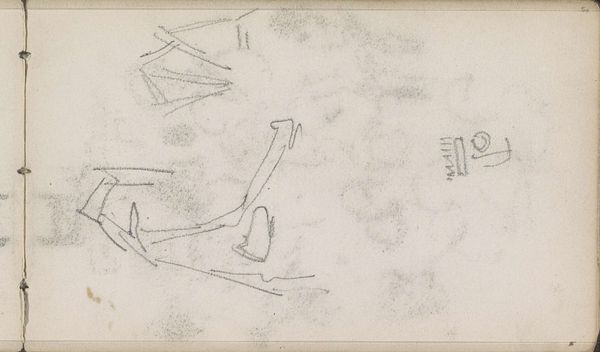
drawing, paper, pencil
#
portrait
#
drawing
#
pencil sketch
#
figuration
#
paper
#
pencil
#
line
#
academic-art
Dimensions: height 119 mm, width 119 mm
Copyright: Rijks Museum: Open Domain
Curator: This delicate pencil sketch, simply titled "Fragmentary Sketch of Two Figures," comes to us from the hand of Auguste Raffet in 1827. It resides here at the Rijksmuseum. Editor: Well, it's fragmentary, all right! My first thought is that it looks like a jumble of half-formed ideas—sort of like a dream fading at the edges. There’s a weightiness in those smudged lines at the top contrasted by the near-ethereal figures at the bottom. Curator: Raffet, you know, he was a student of Gros. Gros instilled within his pupils an absolute understanding of narrative through figure studies. Do you find the weightiness distracting? To me, that section operates almost as an inscription, a blocked-out intention. Editor: No, not distracting so much as evocative. Knowing that Gros influenced Raffet puts it into a sharper relief, if you will. But my read leans into something of the unrest typical for the period that this drawing, composed in the late 1820’s, depicts, as that specific socio-political moment in French History speaks to the end of Napoleon. Is it too much of a stretch to see a figure collapsing, overwhelmed in those clouds, by the failure of imperial ambition? Curator: Oh, absolutely. In the dynamism and uncertainty you identified initially, Raffet appears, through form, to mirror not just the historical and cultural reality of the day, but the psychological impact that failure and shifting identity can bear on a person’s psyche. As a student drawing, though, the political overtones seem subdued. We see only an idea forming rather than a concrete manifestation of his ideological stances. Editor: I think you're absolutely right. And what appears at first glance to be roughness – the sketch-like quality– really yields on closer looking to reveal something powerful and affecting. Curator: Indeed. The fragmentary quality of it, as you pointed out, lends it a mysterious and compelling air. Editor: Well, it's definitely made me consider how preliminary work holds up to finished art! It can show process—reveal intention, maybe, which speaks just as loudly.
Comments
No comments
Be the first to comment and join the conversation on the ultimate creative platform.

